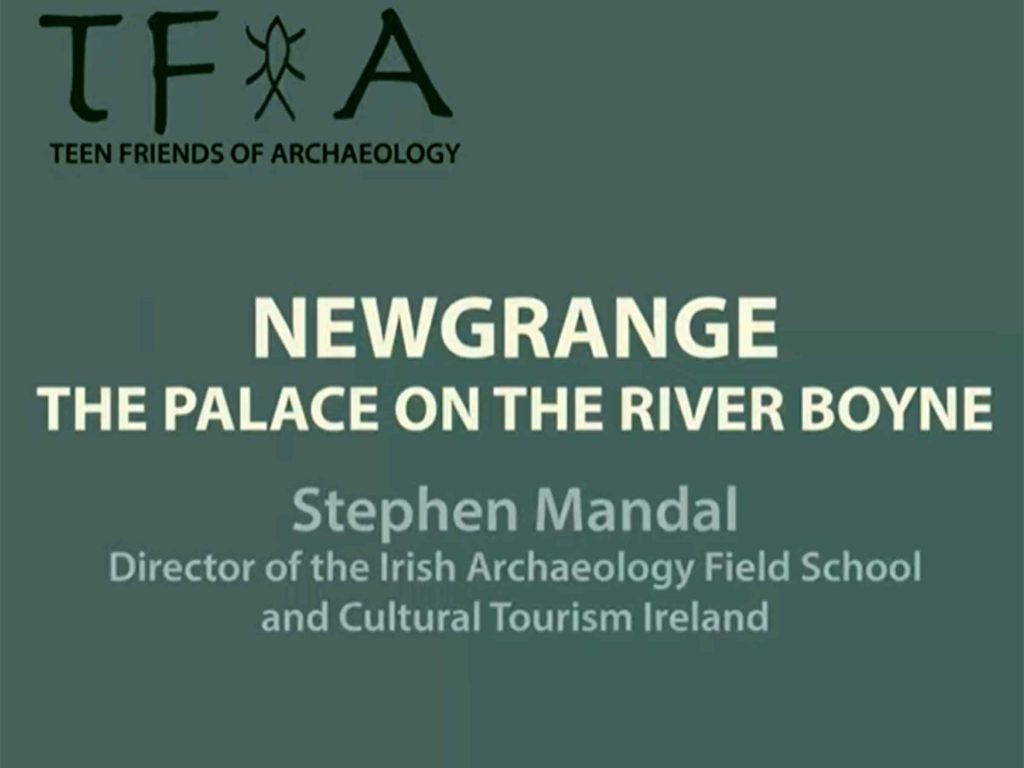
Who were the Stone Age people? They first arrived in Ireland around 7000 B.C. They traveled around hunting and fishing animals and gathering wild foods. They wore clothes made of animal skins. They farmed and cultivated the land for food, and built permanent dwellings and graves in which they
buried the dead. So goes a similar description of Indigenous people in New England at the same period in history. Click here for a one-hour talk about the Irish paleolithic structures by Stephen Mandal, Director of the Irish Archaeology Field School.



In 1690, a 4th-millennium BCE megalithic passage tomb at Newgrange was discovered at Brú na Bóinne. Mandal describes the people at the time living in structures similar to Indigenous wetus here in New England and thriving on seafood harvested from the tidal waters of the Boyne River, similar to the way the Pokanoket People thrived on the waters of Mt. Hope Bay.



Mandal then talks about how stone structures were constructed, including the portal tomb at Newgrange that had a variety of carvings in the rocks that were moved there.



In New England, we find similar stone structures from the same period, such as Hipses Rock in Johnston, RI, perched rocks in Tiverton, RI, and stone tombs in Putnam, New York. For an extensive description of similar structions, including Potumtuk at Mt. Hope in Bristol, RI, click here. For a discussion of the relationship betweed Native Americans and European structures such as Stonehenge, click here. For research into stone structures found in East Freetown, Ma, click here.
